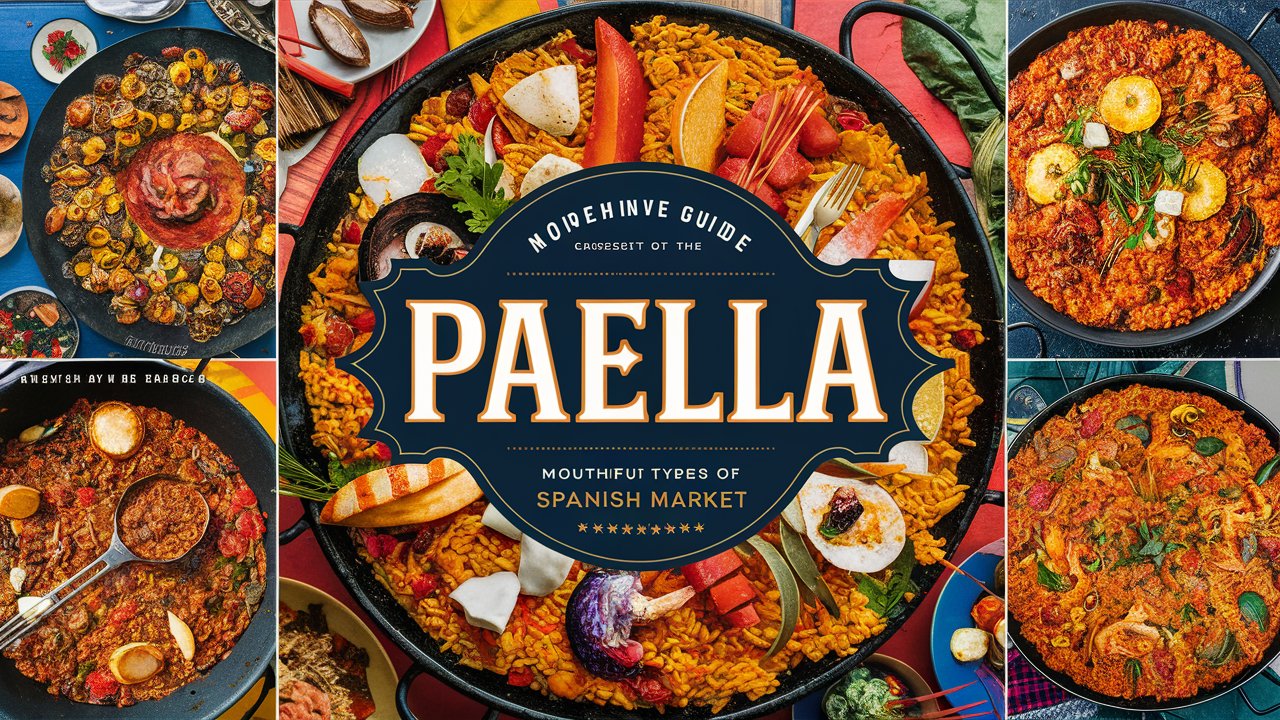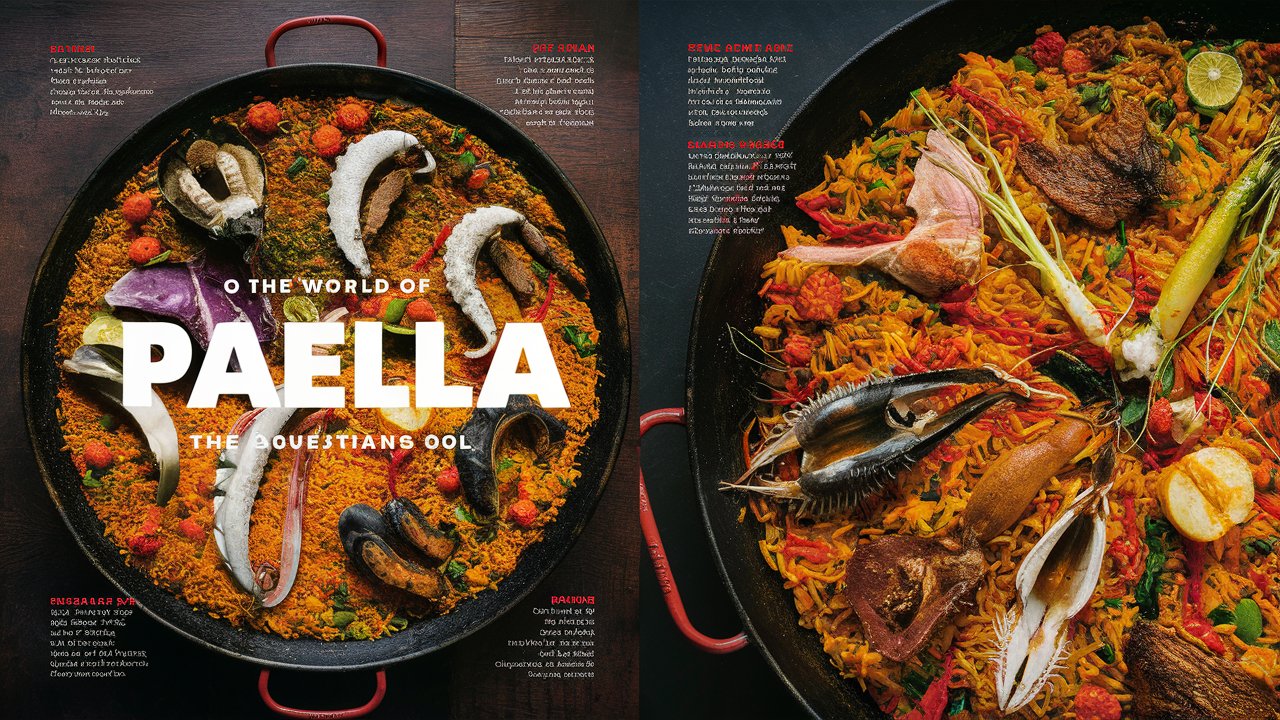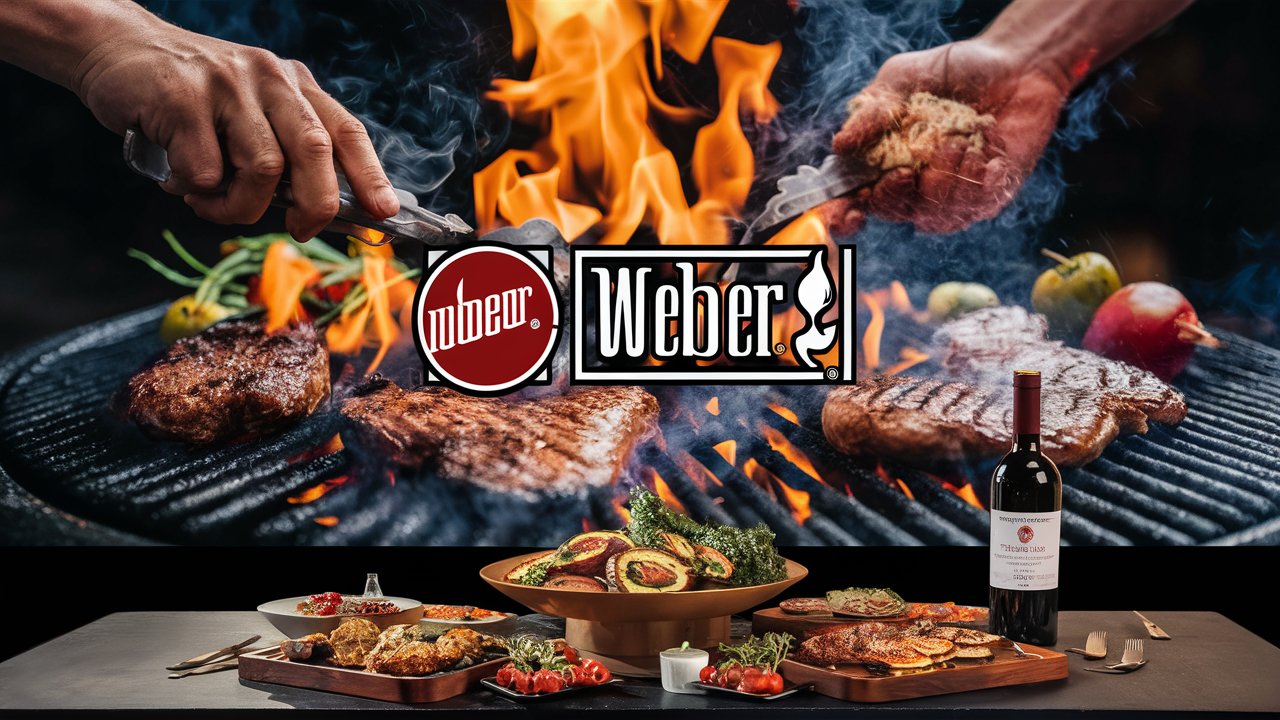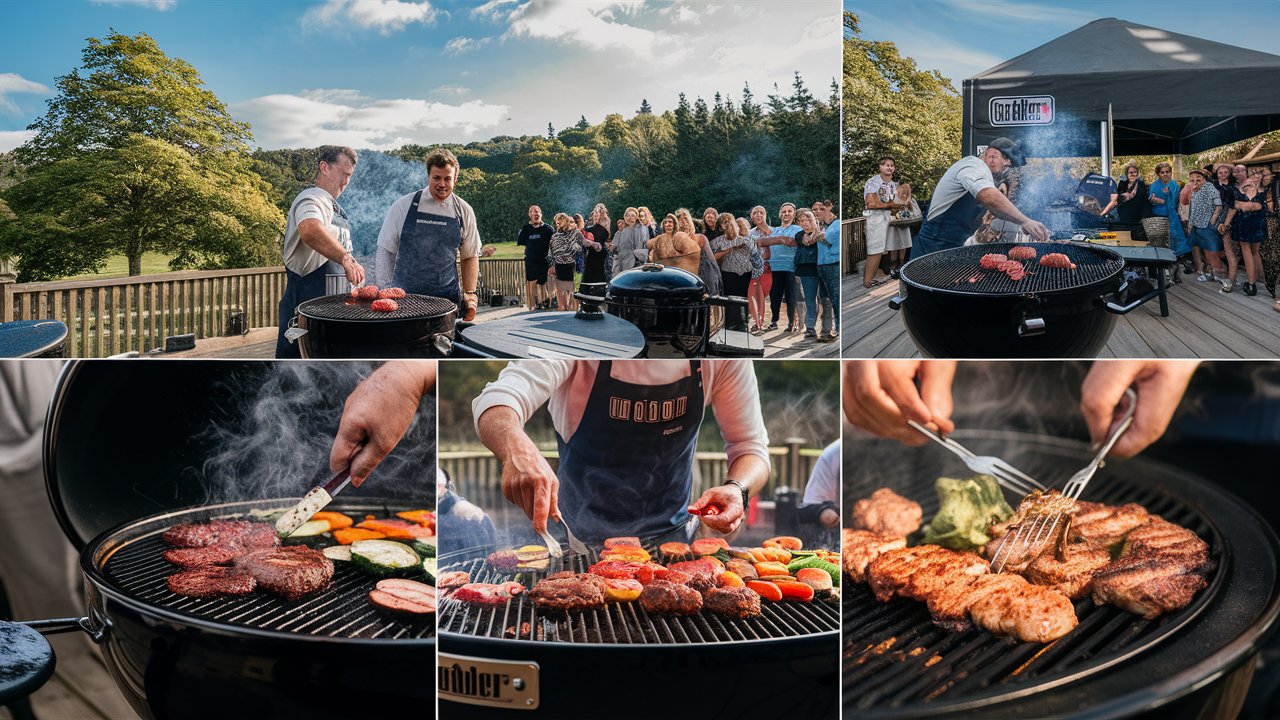Food
The Ultimate Guide to Paella: History, Types, Recipes, and Expert Cooking Tips

Paella is one of the most iconic dishes in Spanish cuisine, celebrated for its rich flavors, vibrant colors, and deep cultural roots. Originating from the region of Valencia, this dish has transcended borders and become a symbol of Spanish culinary tradition worldwide. More than just a meal, paella is an experience—a communal dish meant to be shared, enjoyed, and remembered. Today, there are many variations, from traditional Valencian paella to seafood and vegetarian alternatives, each carrying unique flavors and traditions.
In this guide, we explore the history of paella, types of paella, authentic recipes, cooking techniques, and expert tips that will help you master this celebrated Spanish dish.
The History and Origin of Paella
The story of paella dates back to the 18th and 19th centuries in the rural countryside of Valencia. Farmers and peasants would prepare rice over open fires, mixing it with whatever ingredients were available—beans, rabbit, snails, and occasionally chicken. This rustic dish was simple yet nourishing and eventually developed into what we now recognize as paella Valenciana, the original form of the dish.
The word paella itself comes from the Latin word patella, meaning pan. In Valencia, the term also refers to the wide, shallow pan traditionally used to cook the dish. Over time, paella evolved as ingredients became more accessible through trade, and coastal regions added seafood, creating the famous seafood paella. Today, paella continues to evolve but always maintains its communal spirit.
Types of Paella
1. Paella Valenciana
The most authentic version, paella Valenciana, is made with a combination of rabbit, chicken, snails, and sometimes duck, along with green beans, butter beans, and occasionally artichokes. Saffron and paprika provide its signature color and depth of flavor. This traditional style represents the true Valencian roots of paella.
2. Seafood Paella (Paella de Marisco)
Coastal towns in Spain popularized seafood paella, a dish featuring shrimp, mussels, squid, clams, and sometimes lobster. Unlike Valencian paella, this variation excludes meat, relying solely on the flavors of the sea, infused with saffron and fish stock for a rich taste.

3. Mixed Paella (Paella Mixta)
A modern and popular twist is mixed paella, combining meat such as chicken or rabbit with seafood. While purists may frown upon it, mixed paella has gained international recognition for its versatility and crowd-pleasing balance of flavors.
4. Vegetarian Paella (Paella de Verduras)
For those seeking a plant-based alternative, vegetarian paella highlights fresh seasonal vegetables like peppers, zucchini, artichokes, and beans. Cooked in saffron-infused broth, it offers the same richness without meat or seafood.
5. Black Paella (Arroz Negro)
A unique version of paella is black paella, made with squid ink, giving the rice a dark color and intense ocean flavor. Often served with aioli (garlic mayonnaise), this dish is a favorite in Catalonia and coastal regions.
Essential Ingredients for Authentic Paella
To prepare an authentic paella, the ingredients must be carefully chosen:
-
Rice: Short-grain rice like Bomba or Calasparra absorbs liquid without becoming mushy.
-
Saffron: Provides the signature golden color and earthy aroma.
-
Olive Oil: A base for sautéing vegetables and meats.
-
Stock: Chicken, vegetable, or seafood stock enriches the flavor.
-
Proteins: Rabbit, chicken, seafood, or seasonal vegetables depending on the variation.
-
Vegetables: Green beans, tomatoes, peppers, peas, and artichokes are commonly used.
-
Paprika and Garlic: Add depth and spice.
Step-by-Step Guide to Cooking Paella
1. Prepare the Sofrito
The sofrito is the foundation of paella, made by slowly cooking onions, tomatoes, garlic, and sometimes peppers in olive oil until deeply caramelized. This creates a rich base that flavors the rice.
2. Sear the Meat or Seafood
Chicken, rabbit, or seafood should be seared in the paella pan until golden brown, sealing in the flavors before simmering.
3. Add the Rice and Spices
Once the sofrito and proteins are ready, rice is added and coated in the oil and spices, including saffron and paprika. This step ensures that the rice absorbs all the aromatics.
4. Pour the Stock
Hot stock is poured evenly over the rice, and the mixture is left to simmer. Stirring should be minimal to create the socarrat—the caramelized, crispy rice layer at the bottom of the pan, highly prized in authentic paella.
5. Simmer and Rest
Paella is simmered uncovered until the liquid is absorbed. Once cooked, the pan is removed from the heat and covered with a clean towel for a few minutes to allow the flavors to settle.
Expert Tips for Perfect Paella
-
Always use a paella pan for even heat distribution.
-
Do not stir the rice once the stock is added to achieve a perfect socarrat.
-
Use authentic Spanish saffron rather than artificial coloring for depth of flavor.
-
Cook over an open flame or outdoor grill if possible to replicate traditional methods.
-
Allow the paella to rest before serving for enhanced taste.
Serving and Presentation
Traditionally, paella is served straight from the pan at the center of the table, encouraging communal dining. It pairs beautifully with Spanish wines such as Albariño or Tempranillo and is often accompanied by fresh bread and aioli.
Frequently Asked Questions (FAQ)
Q1: What is the most authentic type of paella?
The most authentic version is paella Valenciana, featuring rabbit, chicken, snails, and beans.
Q2: Can I use long-grain rice for paella?
It is not recommended. Short-grain rice like Bomba is essential because it absorbs flavors while maintaining structure.
Q3: What makes paella yellow?
The golden-yellow color comes from saffron, a spice that also imparts unique flavor.
Q4: Is paella gluten-free?
Yes, paella is naturally gluten-free as long as the stock and seasoning used are free of gluten.
Q5: What is socarrat in paella?
Socarrat is the crispy layer of rice at the bottom of the paella pan, considered a delicacy and a sign of well-cooked paella.
Conclusion
Paella is more than just a dish—it is a cultural treasure that represents the heart of Spanish cuisine. From its humble beginnings in Valencia to its modern variations around the world, paella has remained a timeless classic that brings people together. Whether you prefer the earthy flavors of paella Valenciana, the richness of seafood paella, or the freshness of vegetarian versions, mastering this dish guarantees a memorable culinary experience.
Food
Weber Grillvorführung – Experience the Art of Grilling at Its Finest

When it comes to premium grilling, Weber is a name synonymous with quality, innovation, and unmatched taste experiences. A Weber Grillvorführung (Weber grill demonstration) is more than just a product showcase—it is a culinary journey that introduces enthusiasts and beginners alike to the endless possibilities of outdoor cooking. These events combine hands-on training, expert guidance, and live demonstrations to create an unforgettable experience for anyone passionate about grilling.
In this article, we will dive deep into everything you need to know about Weber grill demonstrations, including their purpose, benefits, what to expect, and why attending one can elevate your grilling game to new heights.
What is a Weber Grillvorführung?
A Weber Grillvorführung is a professional grilling demonstration organized by Weber and its certified partners. These events showcase the versatility of Weber grills—whether gas, charcoal, or electric—while offering participants insights into grilling techniques, maintenance, and accessories. Unlike simple product presentations, these demonstrations are interactive experiences where guests can watch, learn, and often taste delicious creations prepared right in front of them.
Weber focuses on creating an educational and entertaining atmosphere where attendees not only discover the advantages of Weber products but also gain practical grilling knowledge that they can apply immediately at home.
Why Attend a Weber Grillvorführung?
Attending a Weber Grillvorführung offers numerous benefits that go far beyond exploring different grill models. Some of the key reasons include:
-
Expert Guidance: Learn directly from professional grill masters who understand Weber products inside and out.
-
Hands-On Learning: Some demonstrations include interactive sessions where participants can try grilling techniques themselves.
-
Tasting Opportunities: Enjoy freshly prepared dishes that highlight the versatility of Weber grills.
-
Exclusive Insights: Discover tips and tricks that can transform ordinary meals into gourmet-level experiences.
-
Product Knowledge: Get an in-depth look at Weber’s extensive range of grills and accessories, helping you choose the right fit for your lifestyle.
For anyone serious about mastering the art of grilling, these demonstrations are an invaluable opportunity.
Types of Weber Grills Showcased in Demonstrations
One of the highlights of a Weber Grillvorführung is the chance to see different grill types in action. Each category offers unique advantages:
Charcoal Grills
Weber’s charcoal grills remain a favorite among traditionalists who love the smoky, authentic taste only charcoal can deliver. During demonstrations, grill masters showcase how to manage airflow, maintain consistent temperatures, and achieve perfect searing.
Gas Grills
Gas grills are known for their convenience, speed, and versatility. At demonstrations, experts reveal how to control heat zones, cook multiple dishes simultaneously, and use accessories like rotisseries for advanced techniques.
Electric Grills
Ideal for urban settings and small balconies, Weber’s electric grills prove that compact designs can still deliver bold flavors. Demonstrations highlight how easy these grills are to use without compromising on taste.
Pellet Grills
Weber’s pellet grills combine technology with tradition, offering precise temperature control and wood-fired flavors. Demonstrations illustrate how these grills can handle low-and-slow smoking as well as high-heat searing.

What to Expect at a Weber Grillvorführung
When attending a Weber grill demonstration, participants can look forward to an immersive experience that blends education with entertainment. Here is what you can expect:
-
Introduction and Product Overview – A detailed explanation of Weber’s philosophy, product line, and innovations.
-
Live Cooking Demonstrations – Expert grill masters prepare a variety of dishes, showcasing grilling, smoking, roasting, and baking techniques.
-
Interactive Q&A Sessions – Participants are encouraged to ask questions, discuss challenges, and seek personalized advice.
-
Tasting Sessions – Guests get the chance to sample mouthwatering grilled creations, experiencing firsthand the difference Weber grills make.
-
Exclusive Discounts and Offers – Many events provide special promotions for attendees interested in purchasing grills or accessories.
Cooking Techniques Highlighted During Demonstrations
A Weber Grillvorführung is more than just about the grills—it’s also about the techniques. Some of the skills often showcased include:
-
Direct vs. Indirect Heat Cooking
-
Low-and-Slow Smoking for Ribs and Brisket
-
Perfect Searing of Steaks and Burgers
-
Rotisserie Roasting for Chicken and Roast Beef
-
Creative Use of Accessories (pizza stones, grill baskets, smoker boxes)
These practical demonstrations give attendees a strong foundation in grilling that they can replicate at home.
The Social Experience of a Weber Grillvorführung
A Weber grill demonstration is also a social event where like-minded food lovers gather to share their passion. Whether you attend alone, with friends, or as part of a corporate outing, the atmosphere is always welcoming. Networking with other grill enthusiasts and sharing ideas enhances the overall experience.
Many events also feature themed evenings, such as steak nights, vegetarian grilling, or holiday specials, creating a fun and inclusive environment for everyone.
How to Find and Join a Weber Grillvorführung
Weber organizes these events across different regions, often in partnership with local dealers, garden centers, or culinary schools. To find a Weber Grillvorführung near you, check:
-
The official Weber website event listings
-
Authorized Weber dealers in your area
-
Local cooking schools and outdoor lifestyle stores
-
Special announcements via Weber’s social media channels
Early registration is recommended since these events are often in high demand.
Conclusion
A Weber Grillvorführung is more than just a demonstration—it is an invitation to experience the passion, precision, and performance that Weber brings to the world of grilling. From expert insights and hands-on learning to unforgettable tasting experiences, these events inspire grill enthusiasts of all levels. By attending one, you not only expand your grilling skills but also become part of a community that celebrates the joy of outdoor cooking.
Whether you are exploring your first grill or looking to master advanced techniques, a Weber demonstration is the perfect way to elevate your culinary journey.
FAQs About Weber Grillvorführung
1. Are Weber grill demonstrations free to attend?
Many demonstrations are complimentary, but some may require a small fee, especially if food tastings are included.
2. Do I need grilling experience to attend?
No, Weber grill demonstrations are designed for all skill levels, from beginners to seasoned grill masters.
3. Can I purchase a grill directly at the event?
Yes, most events allow you to purchase grills and accessories on-site, often with special discounts.
4. How long does a typical demonstration last?
Most demonstrations last between 1.5 to 3 hours, depending on the program and number of dishes prepared.
5. Can I bring family members to the event?
Absolutely. Weber demonstrations are family-friendly, and many events welcome guests of all ages.
-

 Entertainment1 month ago
Entertainment1 month agoHitaar – Meaning, Significance, and Complete Guide
-

 Technology1 month ago
Technology1 month agoThe Ultimate Guide to Trucofax: Features, Benefits, and How It Works
-

 Trends1 month ago
Trends1 month ago“Coomer SU: Understanding the Phenomenon and Its Impact”
-

 Business1 month ago
Business1 month agoTroozer com – Everything You Need to Know About the Platform
-

 Technology1 month ago
Technology1 month ago“How to Redeem Robux on iRobux.com – Step-by-Step Guide (2024)”
-

 Business4 weeks ago
Business4 weeks agoهنتاوي.com – The Complete Guide to Understanding, Accessing, and Exploring Online Content Safely
-

 Technology1 month ago
Technology1 month agoHMS Photovoltaik: The Future of Solar Energy Efficiency & Innovation
-

 News1 month ago
News1 month agoUnited Airlines Flight UA770 Emergency Diversion: A Detailed Report
